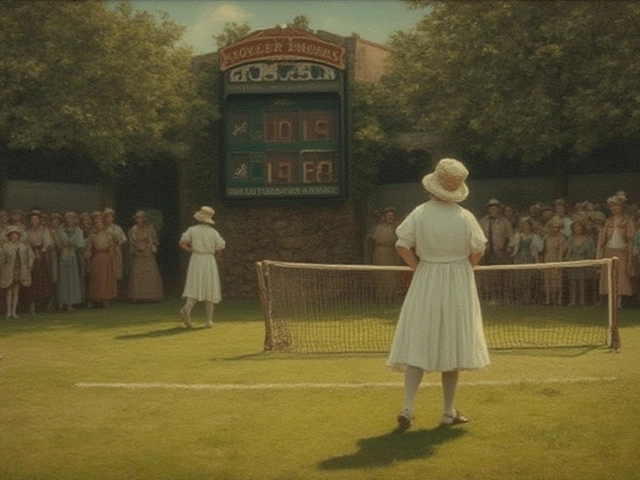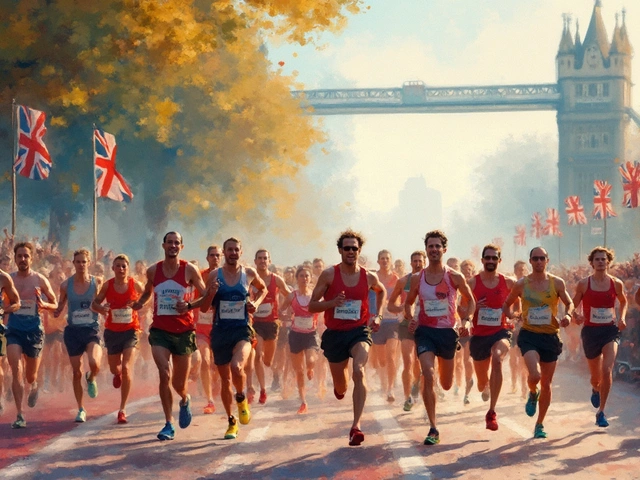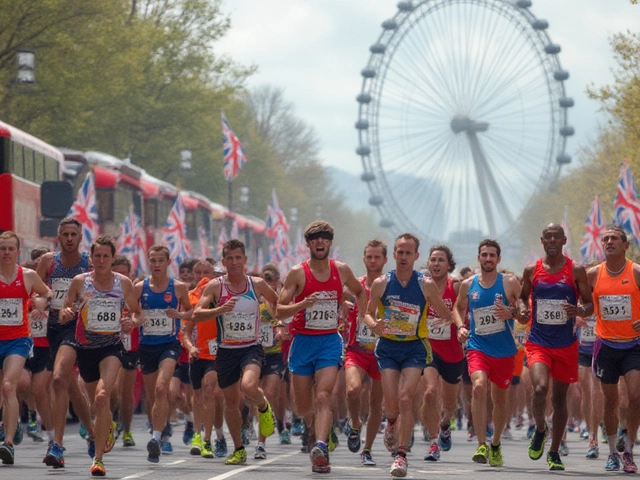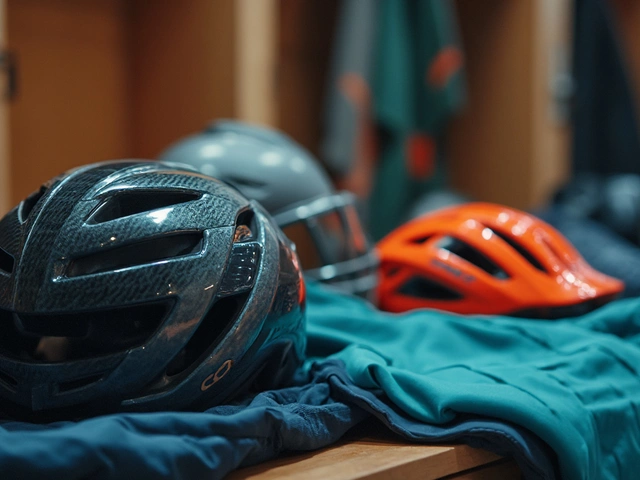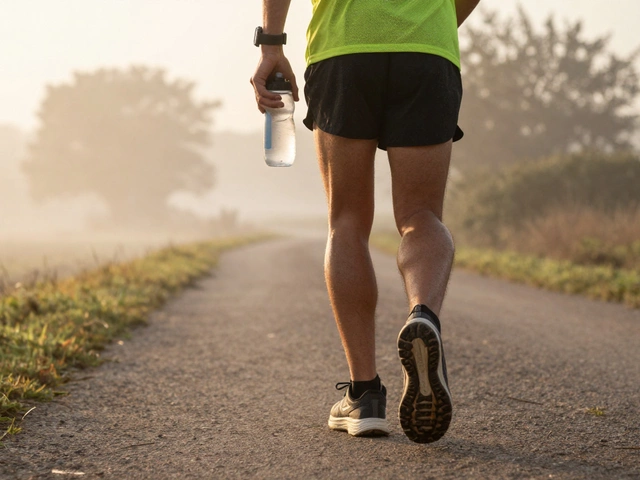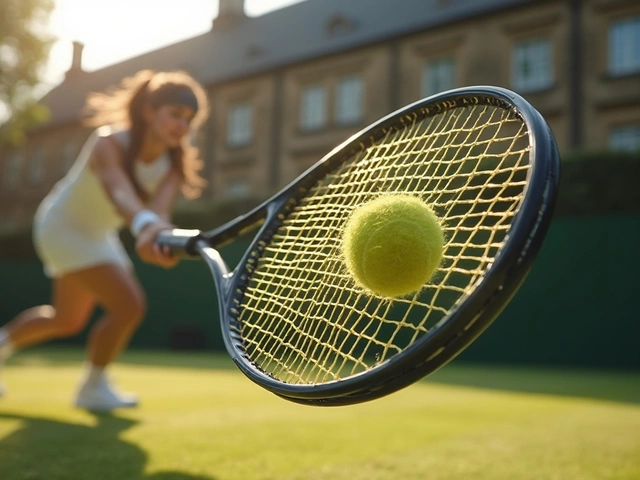If you’ve ever browsed a sporting goods store or scrolled through an online shop, you know “sports equipment” isn’t the only way people talk about the stuff you use for games or workouts. You’ll see words like “athletic gear,” “sporting goods,” “exercise equipment,” and even “kit.” Not all these names mean exactly the same thing, and sometimes the label can steer you to totally different aisles.
The name you see often depends on the context. Looking for weights and machines for training? People call that “fitness equipment.” Searching for team uniforms, shoes, and balls? That’s more likely “sports gear” or “athletic gear.” If you want a catch-all term, “sporting goods” covers pretty much everything, from tennis rackets to baseball gloves to yoga mats. Shopping online? These keywords can help you pull up the right stuff faster.
- Popular Alternative Names
- How Different Sports Use Different Terms
- Shopping Tips: Decoding Labels
- History and Evolution of the Names
- Cool Facts and Myths About Sports Gear
Popular Alternative Names
So what do people actually call this stuff besides "sports equipment"? First off, "athletic gear" pops up a lot, especially when someone’s talking about personal items like shoes, protective pads, or training clothes. It’s a term that’s everywhere in team sports catalogs and high school gym class supply lists.
Another super common one is "sporting goods." Walk into any big retail store that sells outdoor or game stuff, and you’ll probably see signs for “Sporting Goods.” This term usually covers anything you’d use to play a sport: balls, bats, nets, even fishing rods or exercise bands. A fun fact—"sporting goods" became big in the U.S. back in the late 1800s, when brands like Spalding started labeling their products that way to look official. It’s stuck ever since.
There’s also "exercise equipment," which usually means things you find in a gym: treadmills, weights, stationary bikes. Shops and websites split these out because lots of people just want workout stuff, not, say, a soccer ball or a baseball glove. Similarly, "fitness equipment" means pretty much the same thing, though it’s a bit more modern and can include gear for home workouts, Pilates, or CrossFit.
Don’t get surprised if you hear "kit"—especially if you’re listening to someone from the UK or talking about soccer or cricket. "Kit" means all the gear and clothing you need for a specific sport, bundled together. You might see a sports shop selling a “football kit” or a “boxing kit,” which could include clothing, shoes, gloves, and sometimes a bag to carry it all in.
- Athletic gear: Personal wear, shoes, and protection.
- Sporting goods: Items needed for almost any sport.
- Exercise/fitness equipment: Gym stuff, training tools.
- Kit: Complete set for a specific sport (common in the UK).
Names can depend on the sport, country, or even the store. When you’re searching or asking for something specific, try these keywords to zero in on what you actually need.
How Different Sports Use Different Terms
You’d be surprised how much language changes between sports when it comes to talking about the stuff you use. Basketball players usually refer to their stuff as “gear”—think shoes, jerseys, and sometimes even the ball. Swimmers talk about their “swim kit” or even just “kit” for things like goggles, caps, and fins. Runners often say “running gear,” and that mostly means shoes, shorts, and maybe a watch or heart-rate monitor.
Then you’ve got sports like baseball or ice hockey, where each piece has its own special name. Pitchers care about their “glove” or “mitt,” but call the bat just a “bat”—not “equipment.” Hockey players talk about “sticks,” “pads,” or “protective gear.” If you walk into a soccer store and ask for “equipment,” you might just get handed a ball. But say “kit,” and they’ll show you shirts, socks, and sometimes shin guards.
The big stores even divide the aisles by these terms. Some places have an entire section marked "football boots" for soccer, "rackets" for tennis, or "protective gear" for anything that needs a helmet or padding. What you call your stuff has a lot to do with the culture of the sport and, sometimes, where you live. For instance, the word "kit" is used a lot in the UK, while "gear" is more of a US thing.
"The right terminology can save you time and money," says Alex Morgan, pro footballer. "If you know what the staff call it, you’ll always find exactly what you need."
Check out how the most popular sports choose their favorite label:
- Sports equipment (general term): Used in stores, catalogs, and official sport organizations
- Gear: Common in running, basketball, and cycling
- Kit: Popular in soccer, swimming, and cricket (especially in the UK)
- Apparel: Covers uniforms and clothing across most sports
- Tools: Used in golf and baseball for specialty items
Mixing these up isn’t a big deal, but knowing the right word helps you find what you want faster—online or in real life. Fun fact: According to data from Dick’s Sporting Goods, US shoppers search three times more often for “gear” than for “equipment” when it comes to basketball and running products.
| Sport | Common Term |
|---|---|
| Soccer (UK) | Kit |
| Baseball | Equipment / Gear |
| Tennis | Racket / Apparel |
| Hockey | Protective Gear |
| Running | Gear |
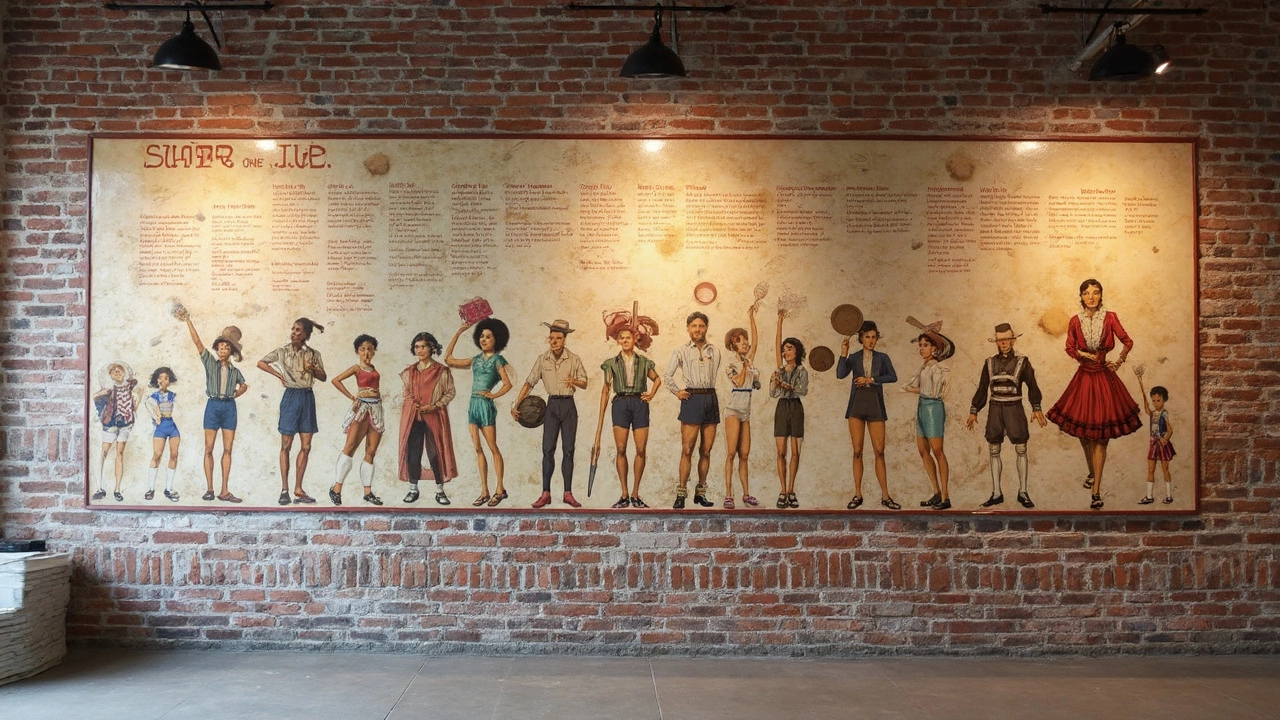
Shopping Tips: Decoding Labels
Ever stand in front of a wall of gear, staring at tags that say "athletic gear," "training equipment," and "sporting goods," and wonder if there’s actually a difference? It’s not just marketing: those labels can change what you find, the quality, and even the price.
Here’s the basic breakdown:
- Sporting goods covers a huge range—think anything from basketballs and soccer nets to fishing rods. In big chain stores, this is usually the name of the whole department.
- “Athletic gear” is mostly about clothes and shoes. Jerseys, compression shirts, and runners—these fit here. If you see this label, don’t expect to find dumbbells or tennis rackets nearby.
- “Exercise equipment” zeros in on weights, mats, machines, and stuff you’d use during a workout, whether at home or the gym. Treadmills and resistance bands live in this section.
- “Kit” or “sports kit” is a British thing, often pointing to full sets like uniforms plus cleats and other game essentials. If you’re shopping online from a UK store, watch for this term.
Where things get tricky is crossover. Soccer shoes might be under "athletic gear" online, but in-store, you’ll find them in both "sporting goods" and "footwear." To track down what you need, it helps to search using both specific and broad terms.
Here’s a quick hack: if you’re shopping for a team, look for “team sports equipment” or “bulk sporting goods.” Need workout stuff for just you? “Home gym equipment” or “personal fitness gear” helps you cut through the noise fast.
Here’s a look at how some major retailers slice it up:
| Label | What You'll Find | Best For |
|---|---|---|
| Sporting Goods | All sports and outdoor gear | General browsing, team buys |
| Athletic Gear | Apparel, shoes, accessories | Activewear, running, basics |
| Exercise Equipment | Weights, home gym, machines | Strength training, home setups |
Last tip: check if the store has a size or sport filter. This can save you serious time, so you’re not wading through stuff you don’t need. If in doubt, ask a staffer—they usually know how the store’s weird labeling works.
History and Evolution of the Names
Way back in the 1800s, the term “sporting goods” showed up first in catalogs and newspaper ads, mostly in the UK and US. Shops started listing items like cricket bats, fishing rods, and early footballs under that name. That same phrase stuck around, especially when brands like Spalding and Wilson began mass-producing baseballs and basketballs in the early 1900s. Their catalogs helped spread the term worldwide.
After World War II, people got more active, picking up new hobbies like skiing or tennis. That’s when “athletic gear” and “sports gear” started to pop up in regular speech and ads. “Athletic gear” often points to stuff you wear or anything closely tied to movement—think shorts, sneakers, and jerseys. “Sports equipment” became a more technical word, usually used when referring to rules or official lists for competitions.
When fitness took off in the 1980s—hello, aerobics videos and home gym sets—“fitness equipment” and “exercise gear” got added to the mix. These names usually mean items for personal workouts like treadmills, dumbbells, or yoga mats, instead of what you’d use in a team sport.
One fun thing: in the UK, people often say “kit” to mean everything you need for a sport, especially in soccer (football). So if you’re in London and someone asks if you packed your kit, they’re not just talking about the ball—they mean your whole setup, like shoes, socks, and even water bottle.
| Term | Where It's Popular | Main Use |
|---|---|---|
| Sporting goods | Worldwide (Origin: UK/US) | Covers all sports items, team or solo |
| Athletic gear | US, Canada | Clothing and soft goods |
| Fitness equipment | Worldwide | Personal workout gear |
| Kit | UK, Commonwealth | Full set for one sport |
No matter which name you use, if you’re searching for sports equipment, these terms can help you land on the right stuff, whether you’re shopping in London, New York, or browsing online.

Cool Facts and Myths About Sports Gear
Some of what you hear about sports equipment is honestly just rumor. For example, people love to say the earliest footballs were made from pig bladders. That's actually true! Leather on the outside, pig bladder inside, and then sewn up tight. Thankfully, we've come a long way since then—modern soccer balls use synthetic rubber and advanced stitching for way more durability and better performance.
Ever wondered why pro basketball players always look so fresh, even after hours on court? Their uniforms are made from special moisture-wicking fabric, a tech that didn't exist decades ago. Back in the 1970s, players wore heavy cotton, which soaked up sweat and weighed them down. Companies started using polyester blends in the 1990s, and now almost every sport uses some kind of smart fabric to keep athletes cool and dry.
A common myth: expensive gear makes you a better athlete. Reality check—research has shown that while high-end gear can be more comfortable or last longer, skill and practice matter a lot more. A rookie with a $300 bat won’t outplay a seasoned hitter swinging the cheap stuff.
Here are some real facts that might surprise you:
- The first mass-produced running shoes, sold in the early 1900s, weighed over one pound each. Today’s racing shoes rarely top 7 ounces.
- Ice hockey helmets weren’t even required for NHL players until 1979. Now, all major team sports require some kind of safety gear.
- According to a 2023 market report, athletic gear and sporting goods make up a $150 billion global industry each year.
| Year | Key Sports Gear Milestone |
|---|---|
| 1920 | First synthetic tennis strings invented |
| 1986 | First graphite golf club hits PGA Tour |
| 2014 | Smart fitness trackers explode in popularity |
And here's one last fun tidbit: the word “kit” in British English covers everything from cleats to shin pads to a soccer jersey. In the US, folks stick to saying "gear" or "equipment.” So, next time you’re talking sports, you can drop a few fun facts or correct those myths that never seem to go away.



